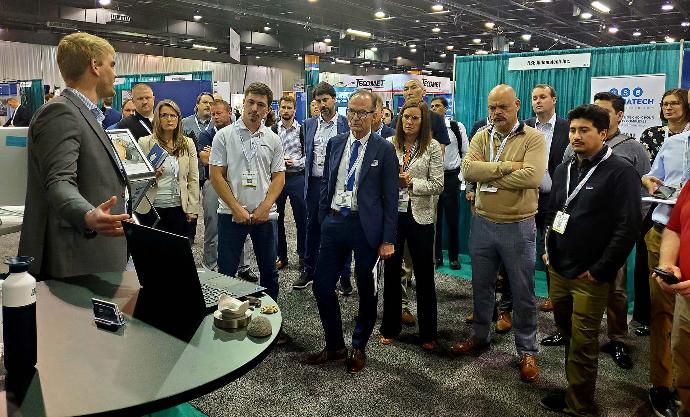BONEZONE Magazine featured Amnovis' multi-metal printing technology innovations in orthopedics
Materials matter in the next generation of 3D printed implants. Amnovis, a contract manufacturing and engineering firm, is at the forefront of the multi-metal printing movement. Senior editor Dan Cook wrote: "Multi-metal printing technology allows R&D engineers to concoct a single orthopedic device made with the best ingredients of select metals. A dash of cobalt chrome's wear-resistant articulated surface here, a sprinkle of titanium's biocompatibility there and voila: a made-to-order implant designed for optimal performance."

Amnovis uses a drum-based printing platform in which powder from two different materials is sucked onto the drums, which roll around build plates while selectively depositing the powder in specific positions. Voxel technology allows Amnovis to control the powder deposition in three dimensions - a process that achieves high precision and accuracy.
Maxime Salingros, Amnovis technical sales engineer: "Engineers who design and develop new implants need a mentality shift and an awareness of the kind of design freedom multi-metal printing offers. They need to consider the possibility of making implants with various 3D printed metals. If they don't know about it, they can't make it."
Typical multi-metal printing applications cover femoral implants (combining high wear/tear of cobalt crome with ingrowth porosity of titanium) and patella locking plates (combining strength of titanium alloy with bending characteristics of titanium).
Apart from huge efforts already put in developing multi-metal printing, the technology remains expensive and requires further optimization. Amnovis focuses on optimal metal combinations for next-level medical devices by understanding and controlling the complex chemical and metallurgical reactions at metals interface regions.
In general, Amnovis is able to manufacture next-level medical devices by breaking new ground in printing technologies, printable materials and printing applications. Ruben Wauthle, Amnovis CEO and Co-Founder: "The Amnovis’ founders are additive manufacturing pioneers who were among the first to employ laser powder bed fusion (LPBF) for printing titanium medical implants. With this innovation ecosystem, Amnovis is capable of introducing product and process enhancements in orthopedics and beyond."
Ruben Wauthle: "For Amnovis, innovation benefits from material and process enhancements as well as the ability to increase AM productivity. Through digital process automation, we provide full traceability and repeatability to flexibly scale up manufacturing of standard and patient-specific medical devices. By scaling our manufacturing capabilities for quality-critical medical devices, we ensure faster delivery at lower cost, while maintaining our quality standards."